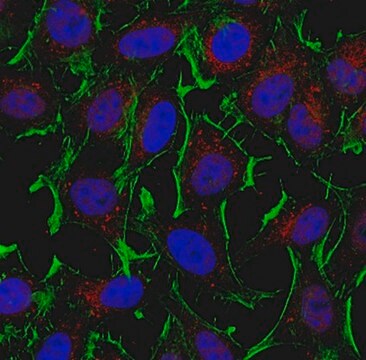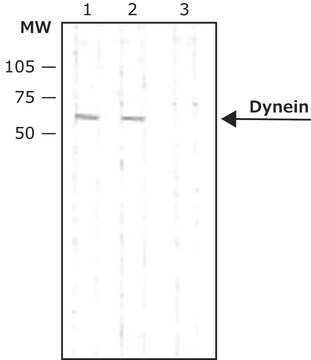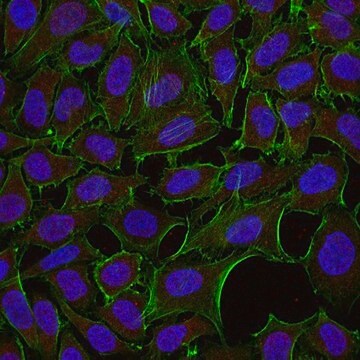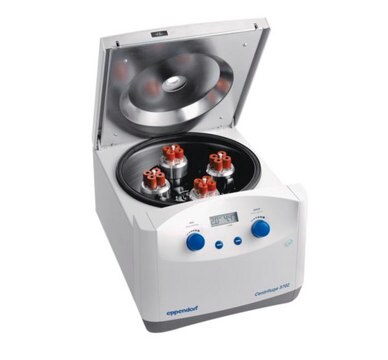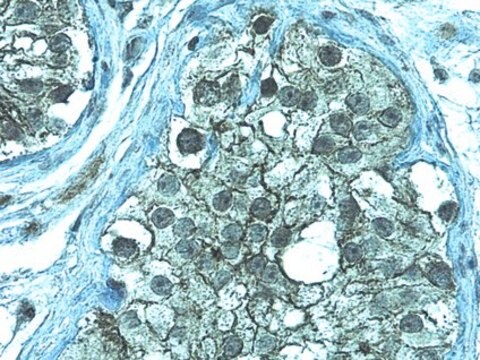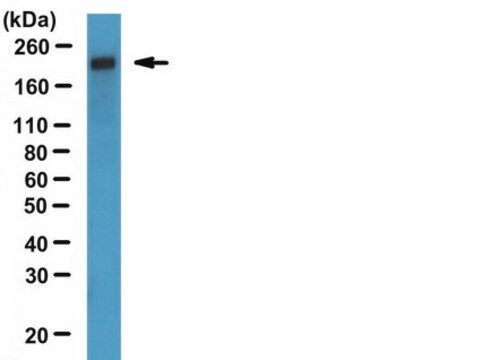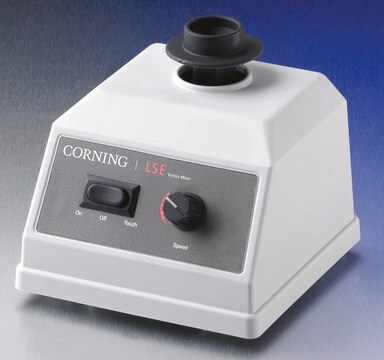MAB1618
Anti-Dynein Antibody, 74 kDa Intermediate chains, cytoplasmic, clone 74.1
clone 74.1, Chemicon®, from mouse
Synonym(s):
Cytoplasmic dynein 1 intermediate chain 1, Cytoplasmic dynein intermediate chain 1, Dynein intermediate chain 1, cytosolic, DH IC-1, Cytoplasmic dynein 1 intermediate chain 2, Cytoplasmic dynein intermediate chain 2, Dynein intermediate chain 2, cytosoli
About This Item
IF
IP
WB
immunofluorescence: suitable
immunoprecipitation (IP): suitable
western blot: suitable
Recommended Products
biological source
mouse
Quality Level
antibody form
purified antibody
antibody product type
primary antibodies
clone
74.1, monoclonal
species reactivity
Xenopus, mouse, fish, rat, human, sheep, Drosophila, bovine
should not react with
squid
manufacturer/tradename
Chemicon®
technique(s)
immunocytochemistry: suitable
immunofluorescence: suitable
immunoprecipitation (IP): suitable
western blot: suitable
isotype
IgG2b
NCBI accession no.
shipped in
wet ice
target post-translational modification
unmodified
Gene Information
human ... DYNC1I1(1780)
General description
Specificity
Application
1:50-1:100 dilution from a previous lot was used. Reacts with cultured MDCK cells, NRR cells, N1E cells, and PTK-1 cells.
Immunoprecipitation:
10 μL of a previous lot per 0.5 gm tissue was used. The monoclonal cleanly immunoprecipitates the entire dynein complex stoichiometrically from TX-100 or NP-40 lysates (including the 530 kD heavy chain, the light intermediate chains and the light chains) from various tissues and cultured cell lines. If detergents such as SDS are used to prepare the lysates the only dynein subunits which are immunoprecipitated are the IC74 subunits (presumably because the dynein complex dissociates), and other contaminating proteins can be found in SDS immunoprecipitates.
Immunoblotting:
1:1,000-1:5000. Reacts with cultured MDCK cells, PC-12 cells, N1E cells, neurons, glia and other cultured cells.
Optimal working dilutions must be determined by end user.
Quality
Western Blot Analysis:
1:500 dilution of this lot detected DYNEIN on 10 μg of A431 lysates.
Target description
Physical form
Analysis Note
HeLa cells, A431 cell lysate
Other Notes
Legal Information
Not finding the right product?
Try our Product Selector Tool.
recommended
Storage Class Code
10 - Combustible liquids
WGK
WGK 2
Certificates of Analysis (COA)
Search for Certificates of Analysis (COA) by entering the products Lot/Batch Number. Lot and Batch Numbers can be found on a product’s label following the words ‘Lot’ or ‘Batch’.
Already Own This Product?
Find documentation for the products that you have recently purchased in the Document Library.
Our team of scientists has experience in all areas of research including Life Science, Material Science, Chemical Synthesis, Chromatography, Analytical and many others.
Contact Technical Service